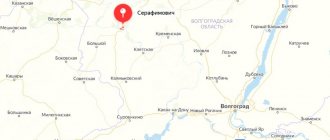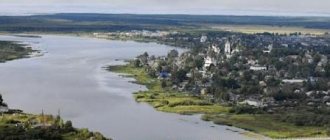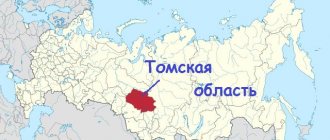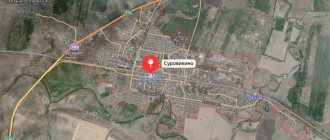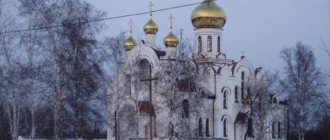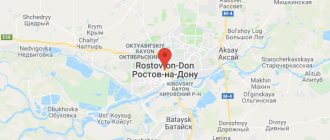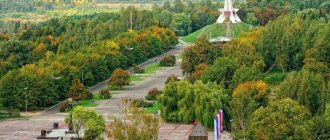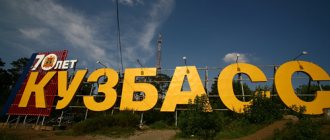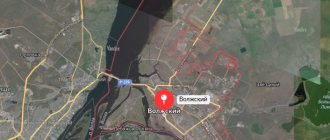In a picturesque place, in the north-west of the country, where the Volkhov River flows and the picturesque Lake Ilmen is located, there is an ancient beautiful Veliky Novgorod city, who was destined to play a significant role in the formation of the Russian state. Let us, in this regard, take the liberty to dwell in more detail on the ancient history of the city.
History of origin
The first settlers - the Ilmen Slovenes - appeared on the hill between the lake and the river in the 8th century and built a fortress, which in modern times is called Rurik's settlement. The history of the city is connected with Prince Rurik, whom the Novgorodians called to reign in order to stop civil strife, as reported in The Tale of Bygone Years. Rurik’s power extended far; he distributed surrounding lands to their husbands, while he himself ruled in Novgorod.
Urban transport
Veliky Novgorod is a major transport hub. Federal and regional highways pass through it. There is a bypass road that reduces the flow of cars inside the city. In addition to the increased number of personal cars, public transport is also developed in Novgorod: trolleybuses, minibuses and buses operate.
Novgorod is also an important railway junction.
Rurik's Settlement
The settlement under Rurik very soon became a large trade and military center with well-developed administration. His squad and relatives settle on fertile lands. “Overseas guests” come here often and for a long time.
According to the chronicle, the Dowager Princess Olga came to Gorodishche, who wanted to unite Rus' under the banners of the princes of Kievan Rus. Until the end of the 10th century, the Settlement played an important political and commercial role, and life was in full swing here. Later archaeological excavations discovered many treasures of Byzantine and Arab coins, which testified to the vigorous trading activity of the Settlement.
In the middle of the 11th century, construction began on a great temple in the lower reaches of the river. When the Hagia Sophia was built, the palm in the development and history of the city passed to it. From now on, spiritual and political power is concentrated here, and a complex of religious buildings is being built. Life in Gorodishche is becoming sad, there is no former scope, and the new settlement around the cathedral complex is called “Novo-Gorod” - life here is in full swing. It becomes the center of social life for the villagers. The settlement retains the title of a princely and later imperial residence.
"Mr. Veliky Novgorod"
A century later, the Novgorodians defeated the squad of Prince Vsevolod and formed a republic with boyar rule (veche). Princes are invited here no longer as rulers, but as hired bosses. From now on, they no longer have ownership rights to city lands.
For the next 350 years, Novgorod becomes an independent republic - “Mr. Veliky Novgorod”, until at the end of the 15th century the Novgorodians are sworn in to Tsar John of Moscow. After a series of devastating wars with the Moscow principality, Novgorod loses its independence and becomes part of the Russian state.
How old is Nizhny Novgorod
Some tourists have the wrong idea about one of the Russian cities. There are two Novgorods. One of them is called the Great, and the second - the Lower. This city was founded much later than its great brother. In 2016 he turned 795 years old. Residents of the city are called Nizhny Novgorod residents. How old Veliky Novgorod is was discussed above.
The cities are located at the same distance from Moscow. Nizhny Novgorod was renamed Gorky from the mid-20th century. Several decades later it was returned to its historical name.
As part of the Russian state
It was difficult for Novgorod to enter Muscovy: fires, famine, and oprichnina caused a two-thirds decrease in population. The city was plundered and deserted. After troubled times, Novgorod loses its glory and turns into a provincial town. During the time of Peter, it was part of the St. Petersburg province. At the end of the 18th century it gained some independence and became the center of the Novgorod province.
In Soviet times, “hard times” began again in the city - it was annexed to the Leningrad region, and it became a rural outskirts. There was no talk of any industrialization of the city.
The occupation of the city by the Germans lasted more than four years, many monuments were destroyed, and museum collections were looted. After the liberation of Novgorod, it again became a regional center, and a state program for the restoration of monuments was adopted. The revival of the glorious city begins. Its monuments, according to UNESCO, are classified as world heritage. The city is experiencing prosperity in economics, culture, and science. Recognized as the most comfortable city in the Russian Federation
In 2009, now Veliky Novgorod celebrated its 1150th anniversary in the renovated city. And three years later it becomes the center of the celebration of the 1150th anniversary of Russian statehood.
Population of North-West Russia
As of 2022, the population of the Northwestern Economic Region is almost 8.5 million people. This is approximately 5.5% of all residents of the country. The population density is 42 people per 1 square kilometer. The fewest inhabitants are in the Novgorod region, the most in the Leningrad region.
The region is characterized by a high level of urbanization. Approximately 87% of the population lives in cities. According to this indicator, the North-West of Russia ranks first. The national composition is relatively homogeneous. About 90% of the residents are Russian. The remaining 10% includes Vepsians (they are concentrated in the east of the Leningrad region), Izhorians, Karelians, Vods (they live in the west of the Leningrad region). There are settlements of Orthodox Estonians in the Pskov region.
Climate in Novgorod
The weather in Veliky Novgorod is reminiscent of the gloomy and damp St. Petersburg - in a straight line it is about 150 kilometers to the second capital. As in St. Petersburg, at the beginning of summer the white nights begin, where the evening dawn converges with the morning.
In winter there are frequent thaws. In some years, January can be very cold – the recorded temperature is minus 45 degrees. But this is rather an exception.
Summer is moderately warm, with an average “top of summer” temperature of more than 17 degrees, and rainy. Sometimes summer temperatures exceed 30 degrees. But the heat in the city is easily tolerated - there is a lot of greenery and places for swimming. There is a well-maintained sandy beach near the St. Sophia Cathedral.
The city receives up to 550 millimeters of precipitation annually. The rainiest months are July and August, with over 70 mm of precipitation. In August and September there are early frosts, when the temperature passes through zero degrees.
The city is located among lakes and rivers, and this makes the air quite humid. Average values: within 85 percent.
The temperate continental climate of the city on Volkhov does not provide residents with comfortable weather throughout the year; there are often cyclones with sharp changes in daytime temperatures.
Kyiv, Staraya Ladoga or Veliky Novgorod. Who's older?
The question of the age of a particular city in Rus' is much more complex than it might seem at first glance. This is primarily due to the fact that the formation of the ancient Russian state took place during a period that left virtually no written sources. In addition, cities often grew out of settlements and fortifications that existed for many centuries, and drawing the line of this transition is very problematic. It’s worth noting right away that not every large medieval settlement can be called a city, even if it has fortifications, although the latter are a fairly important criterion. A city is, first of all, a large populated area whose residents are not involved in agriculture. Typically, this type of settlements is not built in a random order, but on the basis of planning (planned development).
The formation and development of Rus' was marked by the emergence and growth of cities: if at the turn of the 9th-10th centuries chronicles report information about 25 cities, then already in the 13th century there were at least three hundred of them.
However, which city of Rus' can be called the most ancient? The main contenders for this role are cities such as Kyiv, Staraya Ladoga, and Veliky Novgorod.
Unfortunately, when it comes to determining the founding date of a particular city, in one case the approximate dating of the existence of a settlement in a given territory is used, in the other - the oldest mention in a written source. Both of these methods are very, very dubious.
As already mentioned, in the territory of most cities of Rus', archaeologists find traces of more ancient settlements. This is often associated not with continuity, but with the convenience of the location of the territory occupied by the city. Since ancient times, people have settled near rivers, choosing the most suitable areas.
Although the 16th-century Polish historian Matej Stryjkowski wrote about the founding of Kyiv in 430, archaeological research does not support this view. However, it is known that in the 4th-7th centuries, on the territory of present-day Kyiv, there really were settlements of the Prague archaeological culture belonging to the ancient Slavs. Actually, for many centuries on the territory of present-day Kyiv there existed a number of settlements, which in the 10th century merged into a single entity. It is the turn of the 9th and 10th centuries that most historians and archaeologists consider the time of the formation of the city. The first written mentions with the name Kyiv date back to the same time.
See also: Prince, duke, king, king, emperor: origin of words
Another ancient city of Rus' is Staraya Ladoga. It is known that in the 8th-9th centuries this territory was the scene of clashes with the Varangians, from whom the Slavs initially took it. Back in the 8th century, this settlement produced beads using Arabic technologies, which were often used as a currency. In 870, the first wooden fortress was built in Staraya Ladoga - in fact, from about this time Ladoga can be called a full-fledged city.
Another prominent representative of the cities of Rus' is Veliky Novgorod. The official founding date of the city is 859, when the Nikon Chronicle mentions the death of a Novgorod elder. However, such evidence rather speaks of the presence of a certain large settlement, but was it a city, and if so, when was it formed? There is no exact answer. It is known that in the 9th century Novgorod was called the Rurikovich settlement, because it was from this city that the history of the famous dynasty began. However, many researchers believe that, like Kyiv, Veliky Novgorod becomes a full-fledged city only at the turn of the 9th-10th centuries.
To summarize, we can say that the formation of the cities of Rus' occurred at approximately the same time, and Staraya Ladoga, not without reason, claims to be the oldest city, although the age difference with Kiev and Veliky Novgorod is a matter of decades.
Indirectly, the fact of greater antiquity of the cities of the northern part of Rus' is confirmed by such a well-known medieval source as “The Tale of Bygone Years.” According to the chronicle, on his journey, Saint Andrew stood near the mountains on the banks of the Dnieper and proclaimed that there would be a city with a large number of churches. Next, the story is told about Andrei’s campaign up the Dnieper, to the Novgorod lands, where the saint became acquainted with the Slavs and their way of life.
Tags: wooden fortress, fortress, middle ages, wall
Ecology in Novgorod
The environmental situation in the city does not cause any particular concern among the townspeople. The air here is considered clean, thanks to parks and green spaces on the streets. True, monitoring organizations record river water pollution within the city from year to year.
A potential source of danger - chemical is located outside the city limits and does not have a negative effect on the air.
City authorities see a danger to the environment in the absence of facilities for recycling lamps containing mercury and in the maintenance of a solid waste landfill on Luzhskoe Highway, 17 kilometers from the city.
Since 2005, the city has been implementing a target program “Ecology of Veliky Novgorod”, designed to solve urban problems. In 2014, as part of the program, the “Clean Coast” campaign was held and the second stage of a landfill with separate disposal of waste of a high hazard class began operating.
The implementation of the program has a good effect: the only source of air pollution is transport.
Measurements of maximum permissible concentrations of harmful substances are carried out regularly at three environmental posts.
Population of the regional center
Veliky Novgorod is a small city with a population of less than 300 thousand people. By the beginning of 1960 there were only 60 thousand people there. During industrialization, a sharp increase in the urban population began, which stopped during perestroika. In the regional center, there is a tendency towards a decrease in Novgorod residents - most of the working-age population leaves to work in Moscow and St. Petersburg. As of January 1, 2014, a little more than 220 thousand people lived in the city, every third resident of the region. The share of the working-age population is 58 percent of the population (2012 data). The unemployment rate was 1.1 percent at the beginning of 2015.
The most popular specialties in the labor market:
- Doctors
- Nurses
- Installers
- Engineers
- Drivers
- Loaders
- Seamstress
- Cooks
Novgorodians are surprisingly hospitable people. Perhaps this is explained by the fact that thousands of tourists visit the city every year to admire its ancient beauty and visit parks and beaches. Sailing regattas, international competitions and scientific conferences are held here.
Composition and geographical location
In terms of size, the Northwestern Economic Region is the smallest region of the Russian Federation. Today it includes the Leningrad, Pskov and Novgorod regions, the semi-enclave of the Kaliningrad region, as well as the federal city of St. Petersburg.
The area of the region is 210 thousand square kilometers. The Northwestern economic region provides 5.3% of Russia's GDP. It accounts for 3.9% of industrial production and 3.2% of agricultural products.
The ancient cities of Russia – Pskov and Nizhny Novgorod – are located on the territory of the district. At one time they were important trade and defensive points in the northwestern part of the country. The active development of the area began with the construction of St. Petersburg, which became a kind of “window to Europe.” The city was the capital of the state for a long time; many industrial enterprises, cultural and scientific centers were located on its territory. The main function of the North-West of Russia is the implementation of foreign trade operations.
The Northwestern economic region has a fairly favorable economic and geographical position. It has access to the Baltic Sea, which makes it possible to develop economic relations with Latvia, Finland, and Estonia. It borders with Belarus and the Baltic countries. From the Russian side, the region adjoins the Central and Northern regions. If you look at the map, you can see that the North-West is a transit area between the Russian Federation and Europe. The largest ports in the region are St. Petersburg and Kaliningrad.
Through a system of rivers and canals, the North-Western region reaches the Volga. Through Lake Onega and the White Sea-Baltic Canal it is connected to the White and Barents Seas.
Industrial enterprises
Enterprises of the regional center have demonstrated positive dynamics for a number of years. More than 60 percent of the region's entire industry is concentrated here. According to its structure, the enterprise belongs to:
- Processing industry
- Energy production
- Chemical industry
- Food industry
- Mining
- Electronic equipment manufacturing
- Woodworking
The largest enterprise is the Acron mineral fertilizer plant, part of the holding of the same name. Known since Soviet times as a leader in the chemical industry. Fertilizer production accounts for about 40 percent of the city's gross product. The enterprise occupies an area of 600 hectares and employs about 2 thousand people. The average salary exceeds the city indicator - more than 35 thousand rubles. Excellent conditions for work and recreation, sports, and treatment of workers have been created here.
The company has its own sports center with a swimming pool and playgrounds. There is the Akron Palace of Culture, where interesting events take place. If you manage to get a job at a factory, consider yourself and your household very lucky.
Standard of living and finances
The average salary is higher than in the regional centers of the Central Federal District. It is about 30 thousand rubles. This level has been exceeded in modern industrial enterprises:
- JSC Acron - production of mineral fertilizers
- CJSC "Novgorod Metallurgical Plant" - processing of scrap metal, production of copper wire
- LLC "Dirol-Cadbury" - production of chewing gum
- Distillery
It is noteworthy that almost all large enterprises in the city have vacant jobs.
The revenue side of the budget for 2014 is 4.6 billion rubles, but the expenditure side is 300 million more. During the year, the expenditure portion of the treasury exceeds the 10 percent allowed by the budget code, and we have to resort to large loans, increasing the public debt.
Winter is also dark
The second problem will probably be worse than the first. The lack of heat in winter is, in principle, normal for the Russian climate, with the exception of the very southern regions. It is much harder to bear the absence of light.
View of Birzhevoy Bridge and the Spit of Vasilyevsky Island
North is north - in winter we have almost polar night. Even in summer the sun does not rise higher than a five-story building, and in winter it is so lazy to rise: already at 14:00 it begins to noticeably get dark.
In addition, cloudiness in winter is much higher than in summer. The sky is covered with such a dense layer of clouds that even those frail rays that could make their way to people do not reach the ground. In November, the city hides under a gray cloud blanket and it seems that the sky literally lies on the asphalt. The dark gray landscape sets in for a long 5-6 months and everything seems to fall into a sleep. For example, for the entire December of last year in St. Petersburg there were no more than 90 hours of sunshine. This is a little more than four days...
New buildings and neighborhoods
There is no administrative division into districts in the city - it is believed that the city is too small for this. Local residents are accustomed to identifying “independent” areas and names in the city.
On the northern outskirts of the city there are two villages with a population of about 7 thousand people - Krechivitsy and Trubichino. Remote from the center - a trip by public transport will take up to 40 minutes. A promising area for development, there are many old private sector houses at very ridiculous prices - from 400 thousand rubles, however, you will have to invest the same amount in renovating the house. The consolation prize is a large plot of land. The cost of an apartment here is also not high: a two-room apartment in good repair can be purchased for 1.4 million rubles, less than 30 thousand rubles per square meter.
Of the minuses: there is no school in the village of Trubichino; the children get to the neighboring microdistrict by school bus.
Closer to the city is the village of Syrkovo - a working outskirts with chaotic buildings. Here you can buy a house for 400 thousand rubles or a five-story mansion for 12 million. There is a school in the village, but getting here from the city center is difficult: there is only one public transport route, and even that runs once every two hours. The area is suitable for new residents who have their own car.
The downside is that the local population is not very hospitable and is wary of “outsiders.”
The village of Pankovka with a population of up to 7 thousand people can amaze those who come here for the first time with its contrasts. On one side of the road there are private wooden houses, on the contrary - high-rise buildings. Housing here is one of the cheapest in the city: a one-room apartment can be purchased for a million rubles, a private house for 300 thousand.
Ideal for those who have their own car (20 minutes from the center) and like to tinker with garden beds.
The area of Shchusev Street is the most criminal in the city. There is no new construction here, so it is problematic to buy an apartment. Only rooms starting from 400 thousand rubles are put up for sale.
The Grigorovo microdistrict is a residential area that includes a cottage community. The houses here are relatively new - 15 - 20 years old. Prices are lower than in the city center. A one-room apartment can be purchased for 1.4 million rubles. It has good transport links to all areas of the city and developed infrastructure.
Many apartments are for sale in the western part of the city, which is located within walking distance to the center - 20 minutes on foot. Prices for a one-room apartment start at 1.8 million rubles.
In the central part of the city there are low-rise buildings - houses no higher than 5 floors. The cost of apartments starts from 2 million rubles. In the park area, real estate is more expensive - from 2.5 million rubles.
The station area is located a 10-minute walk from the center and boasts a large selection of varied accommodation. In new buildings, prices start from 50 thousand rubles per square meter.
The prices are the same in the shopping part of the city, where almost half of Novgorod residents live. You can purchase either a room in a communal apartment or a spacious apartment in new buildings. Prices range from 45 to 5 thousand rubles per square meter. In luxury housing, the cost of a meter can reach up to 70 thousand.
The White City area is the center of urban new buildings, consisting of white houses with red tiled roofs. A very cozy place to live: developed infrastructure, excellent transport accessibility - you can get to the center in 10 - 15 minutes. There are no traffic jams in the city. In low-rise buildings, the cost per square meter does not exceed 45 thousand rubles, in cottage buildings - from 50 thousand. Real estate in this part of the city is in high demand, so prices are constantly rising.
In general, little housing is being built in Veliky Novgorod - just over 0.5 square meters per citizen. There is a shortage of economy class housing and one-room apartments.
Weather in St. Petersburg by month
The long-awaited spring
March in St. Petersburg is usually damp, but cold due to the piercing wind. At first, spring is not felt at all, and only towards the end of the month can more pleasant days occur, marking its onset. The location of the city has an effect: it is too close to bodies of water, which get very cold during the winter and take a long time to warm up in the spring - that’s why it comes more slowly. Sometimes there are sunny days, again giving way to gloomy and cold ones. But in March there is a chance to see the northern lights!
In April it gets warmer quickly - finally it can be said that real spring is beginning, because the temperature is fixed above 0 °C. Although sometimes it can get very cold if the wind blows from the north. But usually in April the weather is stable, which is rare for St. Petersburg, it doesn’t rain too often, and day by day it gradually but surely becomes warmer.
In April, be sure to take an umbrella, waterproof shoes, and clothing that protects from wind and rain with you - without all this, St. Petersburg is absolutely nowhere almost all year round. By the end of the month, the ice melts on Ladoga - the wind drives it towards the city, and because of it it becomes noticeably colder again. But the bridge-building season begins, and nature blossoms, and the streets become more and more green. April is the last chance to travel to St. Petersburg cheaply before the onset of the high season and the rapid rise in prices that begins by the end of the month, on the eve of the holidays.
May brings with it the sun - warm and clear days appear from time to time. The lawns are turning green, daffodils and crocuses are blooming, and there is the scent of lilac and bird cherry. Although, in comparison with the cities of the middle zone - Moscow, Nizhny Novgorod and so on, not to mention the more southern ones, May in St. Petersburg is cold. In addition, thunderstorms are common at the end of spring, and even though the month is sunny by local standards, most days will still be cloudy and windy. The weather in May is very changeable and sometimes you have to change clothes several times a day.
There are a lot of tourists - this is due both to holidays and to the beginning of navigation. On May 27, City Day is celebrated on a grand scale - there are festivities in all the most important squares and parks, a parade of historical ships, a theater marathon and many other events, and the celebration ends with fireworks.
In mid-May, the fountains of Peterhof , the country residence of the Russian emperors, begin to operate. The complex includes palaces, pavilions, parks, alleys, sculptures, but its main decorations are the fountains; there are more than one and a half hundred of them.
Short and changeable summer
Summer in St. Petersburg is rarely hot - changeable weather is common for the city during these months, and one day you can see clouds, clear skies, and then rain or hail. This picture is especially typical for June. It all depends on the cyclone: if it passes to the south and St. Petersburg falls in the rear part, then the north wind will prevail, so June will be cold, and maybe this fate will even befall the whole summer. If the cyclone passes to the north, then the city will be in its warm part, and in June you can enjoy good weather.
In July it is warmer, you can often even sunbathe on St. Petersburg beaches, and even swim in the Gulf of Finland of the Baltic Sea or nearby lakes - such a swim will be invigorating, because the water remains cool. Temperatures above 25 °C in St. Petersburg rarely rise - there are on average only 16 such days per year. Almost all of them usually fall in July, so this month can be called the only truly summer one - and even then not every year.
Summer in the city is short - already in August cyclones become more frequent, and in the evenings you have to dress warmer, because with the onset of dusk it gets cold quickly. In the second half of the month, the weather deteriorates, more and more rain falls - this time is already very similar to September somewhere in central Russia. But the tourist season continues, in August there are many concerts and exhibitions while the sun gives the last summer warmth.
Summer is the best time to visit St. Isaac's Cathedral . Its colonnade offers a beautiful panorama of the city, especially in the evenings and during white nights.
Rainy but golden autumn
At the beginning of September it can often be even warmer than at the end of August. But in the second decade the weather deteriorates, it rains more and more often, it becomes slushy and dank. The weather in St. Petersburg is generally characterized by variability, but at the beginning of autumn it changes especially often, which is unusual for guests of the city - you need to have different things with you in case it is warm, a little cooler, completely cold - and all these conditions can occur within one day . In September or even early October, “Indian summer” often comes - a fairly short period (up to a week) when the weather is sunny and warm.
After its completion, the sky is constantly filled with clouds, the winds blow more and more strongly - cloudy October . But it’s not cold yet, except that frosts may set in at night. Most of the time in mid-autumn it either rains or falls, sunny days are rare, but the fading nature of St. Petersburg is very beautiful, it just begs to be captured.
November differs little from October, except that it is even less welcoming - it gradually becomes colder, which means the rain falls more and more icy. The sun completely disappears behind thick clouds, and it rains constantly. It is uncomfortable to walk: it is too slushy and cold, and in the second half of the month there is a possibility of ice. If you want to enjoy beautiful autumn views, then in November it is too late to do this - it is better to come in the previous two months.
But, even if the weather in St. Petersburg in late autumn is not pleasant, if you only had free time in November, it is still worth thinking about the trip - the excursion program is not inferior in intensity to other times of the year, and the theater season opens in the fall.
A must when traveling to the Northern capital is a visit to the Hermitage . This museum contains a huge number of exhibits: paintings, sculptures, other works of art and archaeological monuments. Here you can enjoy the works of Russian masters and foreign ones, for example, such artists as Rembrandt, Velazquez, El Greco.
Snowy and active winter
in December - although in some years the month is relatively warm and slushy, and snow cover is established only in January. At first, the weather is unstable, there may be thaws and fogs. There are few clear days - no more than 2-3 per month, the rest of the time the sky is covered with clouds and it is constantly dark - especially since the daylight hours are very short.
Despite the weather, St. Petersburg offers many opportunities for tourism in December, and preparations for the holidays fill the city with a pre-New Year atmosphere. New Year's productions appear in the repertoire of theaters, holiday exhibitions begin to be held in museums, an ice sculpture festival is held - and at the same time, the low season continues, hotel prices rise only in the last days of the month.
This happens because many people want to celebrate the New Year in the Northern capital. Here it is celebrated cheerfully: the squares are filled with people, there are even more thematic festivals, performances and other events than in December - there is no time for everything. January St. Petersburg is a real winter fairy tale, where you can spend your holidays in such a way that the impressions will last at least until summer.
By February , everything calms down, there are few tourists again, and prices are falling - this is a good time to calmly and thoroughly get acquainted with the sights of the city, stroll along its streets, and visit museums. The last month of winter is as cold as January and cloudy, although there are occasional sunny days and a thaw may occur towards the end.
Among the holidays, Maslenitsa can be distinguished - it falls in February or March and is celebrated actively, with folk festivities and fairs. However, there are no differences from Maslenitsa in other cities, and first of all, visiting the holiday will be interesting for foreigners.
Warmest month: average temperature during the day °C, at night °C
Coldest month: average temperature during the day °C, at night °C
Most precipitation: mm
Minimum precipitation - : mm
Sights and famous people of the city
Unlike new housing, there are plenty of attractions in the city - not a single Russian city has preserved so many ancient monuments. More than 50 monuments of ancient Russian architecture have become part of the modern city.
Start your acquaintance with the city with the ancient Kremlin (Detinets) and its towers. Climb the Kokuy Tower, where the observation deck is located, and you will immediately see the architecture of the city, the picturesque surface of Lake Ilmen, and see a clear division of the city on both banks of the river. Next to the ancient Kremlin there is a beautiful park with entertainment, tennis courts, and a concert venue.
The dominant architectural feature and symbol of the city is the St. Sophia Cathedral with a complex of church buildings on the banks of the Volkhov. It was founded by Yaroslav the Wise in the image and likeness of the Kyiv Cathedral. It was also built by Kyiv craftsmen.
Next to the cathedral is the “Millennium of Russia” monument, built in 1862, which will tell you about the heroic pages of history.
Among the outstanding people of the Novgorod land:
- Writers and historians
- Scientists and travelers
- Composers and artists
- Heroes of the Soviet Union
These are dozens, hundreds of famous people who glorified their region. It cannot be otherwise: the city’s rich history, talented people.
Culture and education in Novgorod
Few Russian cities can boast that the bulk of their residents are people with higher and secondary education. Veliky Novgorod is one of this number. We have already talked about the hospitality of Novgorodians: they will willingly show you the way, talkatively introduce you to the sights, and advise you to visit theaters and concert venues:
- The Academic Drama Theater named after Fyodor Dostoevsky has already celebrated its 160th anniversary. His repertoire includes performances based on the works of the great Fyodor Dostoevsky. For the first time in Russia, the acting troupe staged a play based on the novel by Alexander Herzen “Who is to Blame?”
- Theater for children and youth "Maly" - a unique experimental platform for talented youth
- The Roger Puppet Theater organizes fabulous trips to the ancient world of Novgorod, into the goodness of fairy tales. Children themselves become participants in the performances.
- The Philharmonic holds the festivals “Christmas Gifts” and “Celebration of Slavic Literature and Culture.” Here the local chamber orchestra and folk orchestra perform to a storm of applause.
- Museum of Fine Arts - building of the Noble Assembly. The richest collections of paintings from different centuries have been collected.
- The State Museum-Reserve is located on the territory of the Kremlin. There is a unique collection of icon paintings here, second only to the collections of the Tretyakov Gallery.
There are many branches of higher educational institutions of St. Petersburg in the city; there are secondary specialized institutions that train specialists to work at large local enterprises. Students have the opportunity to receive scholarships from enterprises, and upon graduation, acquire a decent job.
Veliky Novgorod is a small and very comfortable town to live in. The main microdistricts are located within walking distance from the historical center of the city. You can fully relax and swim in the summer without leaving the regional center. And the wonderful history of the ancient region will give you many pleasant hours of new discoveries and immersion in the origins of Russian statehood.
Always chilly
It’s chilly here all year round, at any temperature, and inside buildings too. You cannot walk without a T-shirt: you always need to wear underwear under your clothes, otherwise you will freeze.
You may even be hot, but still chilly. It’s hard to imagine this, but it’s always like this here. It’s impossible to get used to this (at least I haven’t succeeded yet). At home you need a warm robe, or better yet two or three (I have four), because you will be cold. It's not the cold that will kill you, it's the humidity. You will shiver slightly from the cold and sweat.
